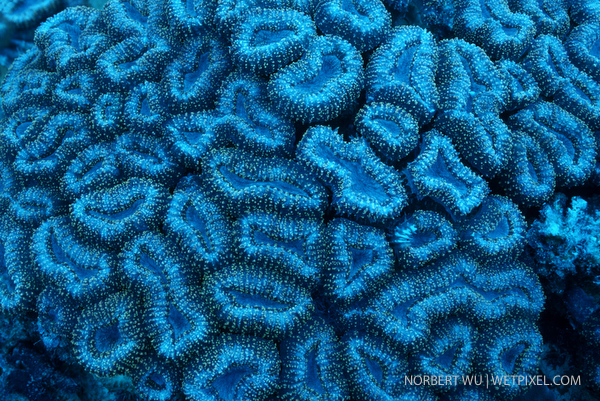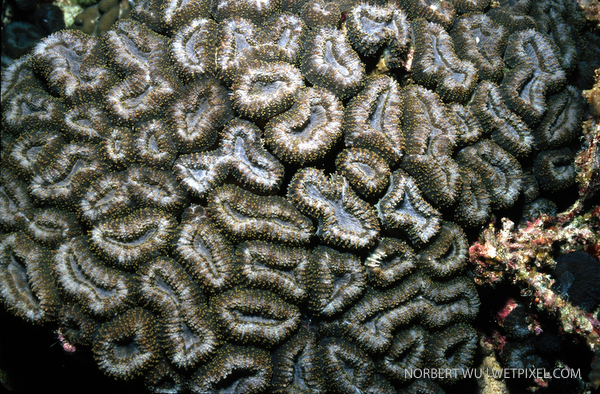Norbert Wu’s Favorite Images: Fluorescence
Norbert Wu’s Favorite Images
Starting from this week, Wetpixel will be featuring my favorite photographs from my career as a weekly feature.
I invite readers to post questions about my imagery on my Facebook “Norbert Wu Productions” page. I will strive to answer most if not all questions, and I hope that the discussions will cover photography techniques, locations, business issues, and philosophy.
Here’s the first in this series. I’ve been thinking about doing this series for a while, but an email I received got me thinking that I should start this today. Here’s the email:
Dear Norbert,
I live in Australia and I enjoy seeing the daily Bing homepage photo and today I saw your amazing photo of fluorescing coral at Palau - it’s a stunning shot with beautiful colors.
Regards
Barry
Thanks Barry! I always welcome kind words on my work like this. Microsoft’s search page, found at bing.com, features outstanding photographs each day. They featured my image of fluorescing corals that Barry mentions. There is an archive of bing.com images.

I’ve been licensing images to Microsoft since the 1990s when Encarta was put out as a CD-ROM. Am I dating myself?
This image was taken on 35mm film. This image was taken with ambient light, with the camera on a tripod (or I may have held it very steadily, using a wide aperture and slow shutter speed). I only used ambient light in order to show the fluorescence of this coral. The blue of the image is due to the fact that nearly all red and yellow colors have been removed from sunlight at 80 feet, the depth that this image was taken.
I attach a photograph of this same coral head, but in this image, underwater flash units supplied the light. The colors in the attached image are “realistic”; these are the colors you’d see if you brought the coral up to the surface and viewed it in sunlight. The fluorescence is there, but the strobe light overpowers it so you don’t see it.

Bing has a very good write-up about fluorescence. Here’s what the US site had to say on the subject:
At 80 feet below the surface of the Pacific, in the reefs off the coast of Palau, some of the coral fluoresces in what little natural light reaches it. The coral absorbs light of one wavelength—which we perceive as a given color—and emits the light as a new color.
Scientists still understand very little about the function of fluorescence among corals. Theories range from suggestions that it’s a defense mechanism against predators to a form of sunscreen to guard against ultraviolet rays.
Palau, a chain of islands in Micronesia, has some of the world’s best snorkeling and scuba opportunities for swimmers interested in exploring life on the reef. During the past decade, the government and citizens of Palau have made major strides in helping to preserve the coral habitat off the shores of the islands. Not only are the reefs a source of tourism, they’re the foundation of the broader ecosystem, sustaining daily life for the islands’ residents.
I am posting my favorite images onto my blog too. As of today, Saturday evening, April 26, 2014, it has accumulated 64,500 hits (update, as of April 29, 2015, the blog has accumulated 117,900 hits). I’m impressed that there have been so many readers of my blog posts, especially considering that I have not made much effort so far to advertise the blog. (Hey, I am still new to all this social media stuff).
About the author:
Norbert Wu is an independent photographer and filmmaker who specializes in marine issues. His writing and photography have appeared in thousands of books, films, and magazines. He is the author and photographer of seventeen books on wildlife and photography and the originator and photographer for several children’s book series on the oceans. Exhibits of his work have been shown at the American Museum of Natural History, the California Academy of Sciences, the National Academy of Sciences, and the National Museum of Wildlife Art.
He was awarded National Science Foundation (NSF) Artists and Writers Grants to document wildlife and research in Antarctica in 1997, 1999, and 2000. In 2000, he was awarded the Antarctica Service Medal of the United States of America “for his contributions to exploration and science in the U.S. Antarctic Program.” His films include a pioneering high-definition television (HDTV) program on Antarctic’s underwater world for Thirteen/WNET New York’s Nature series that airs on PBS.
He is one of only two photographers to have been awarded a Pew Marine Conservation Fellowship, the world’s most prestigious award in ocean conservation and outreach. He was named “Outstanding Photographer of the Year” for 2004 by the North American Nature Photographers Association (NANPA), the highest honor an American nature photographer can be given by his peers.